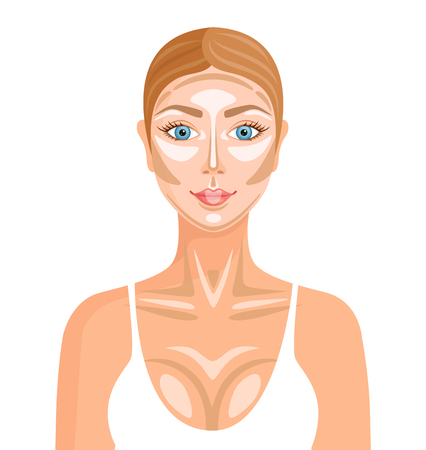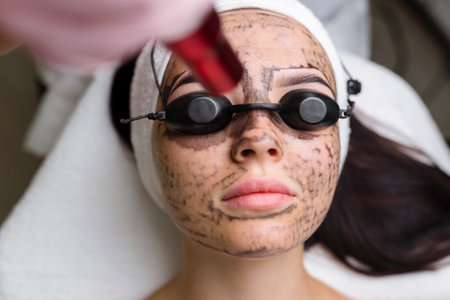Introduction to Chemical Peels in the UK
Chemical peels have steadily carved out their place in the British skincare landscape, evolving from niche procedures into mainstream solutions for a wide array of skin concerns. Historically, the origins of chemical exfoliation can be traced back thousands of years, with ancient civilisations using natural acids and plant extracts to rejuvenate the skin. However, it wasn’t until the late 20th century that modern chemical peel formulations began to gain traction in dermatology and aesthetic clinics across the UK. Today, these treatments are no longer reserved for celebrities or those seeking dramatic transformations; instead, they have been thoughtfully integrated into everyday British skincare routines. The appeal lies in their versatility—offering options ranging from gentle superficial peels for a subtle glow, to more intensive treatments aimed at addressing pigmentation, fine lines, and acne scarring. As public awareness around skincare has grown, so too has the demand for safe and effective methods tailored to different skin types, prompting ongoing innovation and adaptation within the field. This evolution reflects not only advancements in formulation and technique but also a shift towards personalised care, making chemical peels an accessible and trusted choice for many across the UK.
2. How Chemical Peels Work: The Science Explained
Chemical peels are a cornerstone of modern aesthetic practice in the UK, offering an effective way to rejuvenate the skin by harnessing controlled chemical exfoliation. At their core, chemical peels use acids or enzymes to break down the bonds between dead skin cells on the surface, prompting the body’s natural cell turnover process. This results in fresher, smoother, and often more evenly toned skin emerging from beneath the treated layer.
The fundamental mechanism involves applying a carefully formulated solution to the skin for a specified period, after which it is either neutralised or left to self-neutralise, depending on the product used. This triggers a mild injury to the epidermis (and sometimes the upper dermis), which stimulates new cell growth and collagen production—both critical factors for youthful-looking skin.
Main Types of Chemical Peels Used in UK Clinics
| Type of Peel | Main Ingredient | Depth of Action | Typical Uses |
|---|---|---|---|
| Superficial Peel | Alpha Hydroxy Acids (AHAs) – e.g., Glycolic Acid | Epidermis only | Mild pigmentation, dullness, fine lines |
| Medium Peel | Trichloroacetic Acid (TCA) | Epidermis and upper dermis | Age spots, moderate wrinkles, acne scars |
| Deep Peel | Phenol or higher concentrations of TCA | Deeper dermal layers | Severe sun damage, deep wrinkles, precancerous growths |
Key Takeaways for Different Skin Types in the UK Context
The suitability and safety of chemical peels depend significantly on skin type and underlying concerns. British clinics typically offer bespoke assessments to match peel depth and ingredients to individual needs. For instance, lighter AHAs are often preferred for sensitive or fair skin types common in the UK, while more robust formulations may be reserved for those with resilient or oilier complexions. This careful matching helps minimise risks such as hyperpigmentation or irritation, ensuring optimal results across diverse British skin profiles.

3. Navigating Different Skin Types: Safety and Efficacy
Chemical peels have become increasingly popular across the UK, with individuals from diverse backgrounds seeking clearer, brighter, and more even-toned skin. However, the British population is a tapestry of various skin tones—from fair to olive to darker complexions—each responding differently to chemical exfoliation. Understanding these distinctions is vital for ensuring both safety and efficacy.
Fair Skin Types: Cautious Optimism
Those with fair or lighter skin (Fitzpatrick types I-II) often find that mild to medium-depth peels, such as glycolic acid or lactic acid, deliver visible improvements with minimal risk of pigmentation issues. Nonetheless, sensitivity is a real concern; overzealous application or using high concentrations can result in redness, irritation, or prolonged peeling. Patch testing and gradual escalation remain best practice, especially for first-time users.
Olive Skin Tones: Balanced Approach Needed
Individuals with olive complexions (Fitzpatrick types III-IV), common among those of Mediterranean, Middle Eastern, or South Asian descent in Britain, experience a different set of challenges. While they often tolerate superficial peels well, there is an increased risk of post-inflammatory hyperpigmentation if deeper or stronger acids are used. Salicylic acid and mandelic acid are generally favoured due to their gentle action and lower likelihood of triggering discolouration. Careful selection and professional supervision are recommended for this group.
Darker Skin Tones: Prioritising Safety
For those with darker skin (Fitzpatrick types V-VI), such as people of African or Afro-Caribbean heritage, chemical peels require an extra level of caution. The skin’s heightened melanin content means it is more prone to adverse effects like hyperpigmentation or even hypopigmentation following aggressive treatments. Superficial peels—particularly those based on mandelic acid or low-concentration salicylic acid—are usually safest. It is essential for practitioners in the UK to be well-versed in treating diverse skin tones and for patients to seek clinics familiar with multicultural dermatology.
Best Practices Across the Spectrum
No matter the skin type, all individuals benefit from pre-peel consultations focusing on medical history, current skincare regimen, and realistic expectations. Sun protection post-peel is universally crucial given Britain’s unpredictable UV exposure throughout the year. By tailoring chemical peel protocols to individual needs and respecting the nuances within our multicultural society, practitioners can achieve optimal results while minimising risks—a testament to the ongoing evolution of safe skincare in modern Britain.
4. Popular Chemical Peels in the UK: From Classic to Modern Innovations
Over the years, the landscape of chemical peels available in the UK has evolved significantly, catering to a diverse range of skin types and concerns. In British clinics and salons, practitioners now offer both tried-and-tested classic peels as well as cutting-edge formulations designed to minimise downtime and irritation. Below is a summary table highlighting some of the most commonly used peels, spanning from traditional options to innovative, gentler alternatives.
| Name | Main Ingredient(s) | Typical Use | Suitability for Skin Types |
|---|---|---|---|
| Glycolic Acid Peel | Glycolic Acid (AHA) | Brightening, fine lines, mild pigmentation | Normal to oily; caution for sensitive skin |
| Salicylic Acid Peel | Salicylic Acid (BHA) | Acne-prone skin, oil control, congestion | Oily and combination; not for dry/sensitive skin |
| Lactic Acid Peel | Lactic Acid (AHA) | Hydration, mild exfoliation, dullness | Dry, sensitive or mature skin |
| TCA Peel (Trichloroacetic Acid) | TCA | Deeper resurfacing, pigmentation, scarring | Most skin types with professional oversight; higher risks for darker tones |
| Mandelic Acid Peel | Mandelic Acid (AHA) | Sensitive skin, rosacea-prone skin | All skin types; especially good for sensitive or ethnic skin |
| PHAs (Polyhydroxy Acids) | Gluconolactone, Lactobionic acid | Mild exfoliation with hydration, minimal irritation | Very sensitive or compromised skin barriers |
The transition from classic formulas like glycolic and salicylic acid towards mandelic acid and PHAs reflects an industry-wide shift towards inclusivity and safety. UK practitioners now place greater emphasis on personalising treatments based on Fitzpatrick skin type and individual tolerance levels. Modern protocols frequently include patch testing and pre-peel consultations—an approach that aligns with the British preference for measured caution in aesthetic procedures. Whether seeking visible rejuvenation or a subtle refresh, todays clients can access a tailored selection of peels designed to balance efficacy with safety, minimising risks such as post-inflammatory hyperpigmentation or excessive peeling.
5. Professional vs. At-home Peels: What’s Right for You?
When it comes to chemical peels, one of the most crucial decisions is whether to opt for a professional treatment or try an at-home product. Both options have evolved considerably, but the best choice depends on your skin type, concerns, and comfort with safety protocols—a point that resonates strongly within British culture, where a cautious yet curious approach to new skincare trends is common.
Understanding Professional Chemical Peels
Professional peels are administered by trained practitioners in clinical settings such as dermatology clinics or reputable beauty salons. These treatments use higher-strength acids and often provide more dramatic results. They are particularly suitable for those with stubborn pigmentation, severe acne scarring, or signs of ageing. The expertise of a professional ensures accurate assessment of your skin type and tailored application, reducing risks associated with deeper peels. In the UK, regulations around professional treatments tend to be strict, which adds an extra layer of reassurance for safety-conscious clients.
The Appeal of At-home Peels
Over-the-counter chemical peels have become increasingly popular, largely thanks to advancements in formulation that allow for milder acids at lower concentrations. Products containing ingredients like glycolic acid, lactic acid, or mandelic acid can offer gentle exfoliation suitable for regular maintenance or sensitive skin types. British consumers often appreciate the convenience and affordability of at-home options, but there is also a healthy scepticism about potential side effects and long-term efficacy without expert guidance.
Safety and Efficacy: A British Perspective
In Britain, there is a strong cultural emphasis on safety—many prefer to err on the side of caution. This means patch-testing products, following instructions meticulously, and consulting healthcare professionals when in doubt. While some may feel comfortable experimenting with mild at-home peels, others value the peace of mind that comes with professional oversight. The NHS and various consumer watchdogs regularly issue guidance on safe cosmetic practices, reinforcing this careful approach.
Making the Right Choice for Your Skin Type
If you have sensitive or darker skin tones prone to hyperpigmentation, it’s wise to seek professional advice before trying any peel—at home or otherwise. Those with resilient skin seeking mild rejuvenation may find over-the-counter products sufficient. For persistent issues or if you’re unsure about your skin’s reaction to acids, booking a consultation with a qualified practitioner remains the gold standard.
Practical Takeaways
Ultimately, selecting between professional and at-home chemical peels hinges on personal preference, risk tolerance, and desired results. British pragmatism often leads to starting conservatively—with low-strength home products—and escalating to professional treatments only if needed. Whichever route you choose, prioritise informed decision-making and consistent aftercare for the safest and most effective outcome.
6. Aftercare and Recovery: The British Way
Chemical peels can deliver transformative results, but the aftercare phase is crucial for ensuring skin heals optimally and complications are minimised—especially in the context of the UK’s unique climate and lifestyle. Here’s a practical guide tailored to local needs and concerns.
Respecting the British Weather
The UK’s often cloudy, damp weather might seem forgiving, but don’t be lulled into complacency. UV rays penetrate even on overcast days. After a peel, the skin is especially vulnerable to sun damage, which can trigger pigmentation and slow recovery. Always use a broad-spectrum SPF 30 or higher—even if it’s raining cats and dogs. Opt for formulations that are lightweight and non-comedogenic, suitable for layering under make-up or moisturiser.
Moisture Management in a Moist Climate
British homes can swing between central heating in winter and unexpected humidity in summer. Both extremes can disrupt skin barrier repair after a chemical peel. Use gentle, fragrance-free moisturisers rich in ceramides or hyaluronic acid to lock in hydration without overwhelming sensitive post-peel skin. Avoid heavy occlusives that could clog pores, especially if you’re prone to breakouts.
The Art of Minimalism
Resist the temptation to pile on actives or resume your full skincare routine too soon. Keep things simple for at least a week: cleanse with lukewarm water and a mild, sulphate-free cleanser; apply your chosen moisturiser; finish with sunscreen during the day. Steer clear of exfoliants, retinoids, or vitamin C serums until your practitioner gives the go-ahead.
Lifestyle Considerations: UK-Specific Habits
If you commute by train or Tube, shield your face from urban pollution with a physical barrier (like a scarf) and reapply sunscreen if you’ll be outdoors at lunchtime. For gym-goers: skip intense workouts for at least 48 hours post-peel to prevent sweating from irritating sensitive skin. And if you’re partial to a hot cuppa or long soak in the bath, stick to lukewarm temperatures—excess heat can prolong redness and discomfort.
Managing Common Concerns
Redness, mild swelling, and peeling are all normal after-effects of most peels. However, if you experience severe discomfort or signs of infection (increasing pain, pus, persistent swelling), contact your practitioner promptly. In the UK, NHS walk-in clinics or pharmacies can provide swift advice for minor concerns.
A Note on Professional Support
Follow-up appointments matter. Reputable practitioners will schedule check-ins to monitor healing—don’t skip these! They can also recommend UK-available products best suited to your skin type and climate.
By respecting both professional guidance and local environmental factors, Britons can enjoy safer outcomes and radiant results from chemical peels—no matter their skin type or where they call home on this rainy isle.
7. Looking Ahead: The Future of Chemical Peels in British Skincare
As we stand on the cusp of a new era in skincare, it is worth taking an honest look at how chemical peels are evolving within the UK context. The landscape is shifting, driven by a blend of scientific research, consumer demand for safety and efficacy, and the unique needs of diverse British skin types.
Emerging Trends in Chemical Peels
Recent years have seen a clear move towards more personalised peel protocols. Clinics across Britain are adopting advanced diagnostic tools—such as digital skin analysis—to tailor treatments to individual requirements. There’s also growing interest in gentler acid blends that provide results without excessive downtime, a feature highly valued by busy urban professionals. Home-use peels with controlled concentrations are gaining traction, though safety remains paramount, with reputable UK brands investing heavily in user education and aftercare support.
Ongoing Research and Innovation
The British dermatological community continues to contribute significantly to global research on chemical peels. Current studies are exploring novel ingredients like polyhydroxy acids (PHAs), which promise effective exfoliation while being better tolerated by sensitive or darker skin tones—a key consideration in the UK’s multicultural society. There is also increased focus on combining chemical peels with other non-invasive technologies such as LED therapy or microneedling to enhance outcomes for issues like pigmentation and acne scarring.
What Can British Users Expect?
Looking ahead, British users can expect safer, smarter, and more inclusive options when it comes to chemical peels. Regulations are tightening to ensure quality and transparency across clinics and at-home products alike. We anticipate greater accessibility through NHS partnerships for treating specific medical skin conditions, alongside continued innovation from private practitioners. Ultimately, the future will be shaped by evidence-based practice—balancing efficacy with the highest standards of patient care tailored to Britain’s wonderfully varied population.
In summary, while trends may come and go, the enduring principle remains: chemical peels must evolve responsibly. By staying informed about emerging science and insisting on qualified practitioners, British consumers can look forward to brighter skin futures—safely and confidently.


